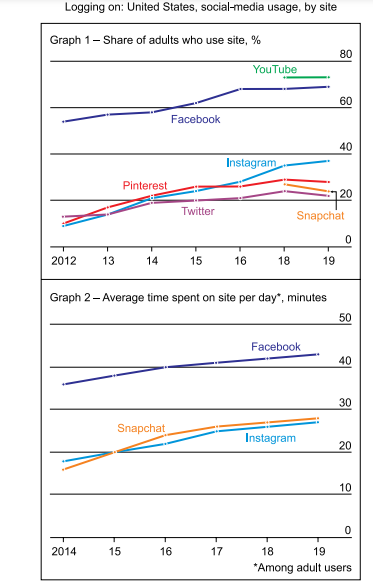Leia o texto para responder à questão.
America’s social-media addiction is getting worse

(Sources: Pew Research Centre; e Marketer)
A survey in January and February 2019 from the Pew Research Centre, a think tank, found that 69% of American adults use Facebook; of these users, more than half visit the site “several times a day”. YouTube is even more popular, with 73% of adults saying they watch videos on the platform. For those aged 18 to 24, the figure is 90%. Instagram, a photo-sharing app, is used by 37% of adults. When Pew first conducted the survey in 2012, only a slim majority of Americans used Facebook. Fewer than one in ten had an Instagram account.
Americans are also spending more time than ever on social-media sites like Facebook. There is evidence that limiting such services might yield health benefits. A paper published last year by Melissa Hunt, Rachel Marx, Courtney Lipson and Jordyn Young, all of the University of Pennsylvania, found that limiting social-media usage to 10 minutes a day led to reductions in loneliness, depression, anxiety and fear. Another paper from 2014 identified a link between heavy social-media usage and depression, largely due to a “social comparison” phenomenon, whereby users compare themselves to others and come away with lower evaluations of themselves.
(www.economist.com, 08.08.2019. Adaptado.)
According to the first paragraph and the graphic images, nowadays the most popular social-media platform among American adults is









